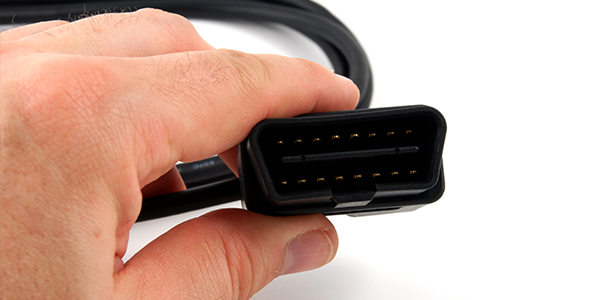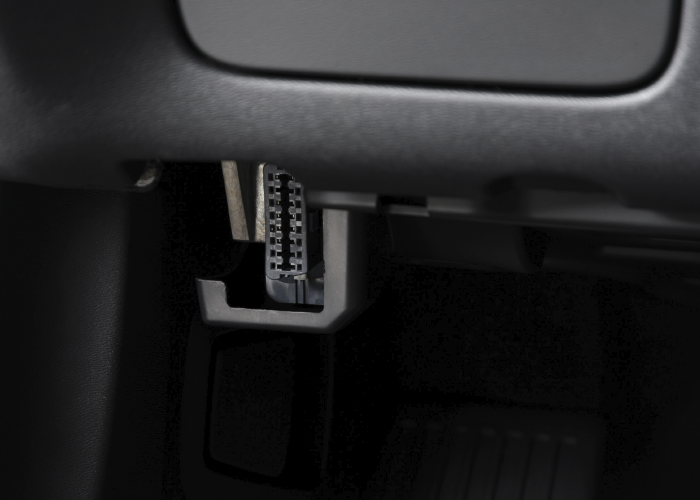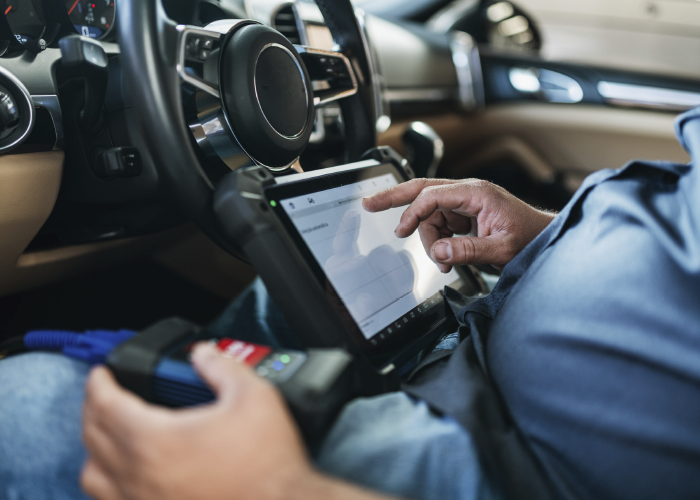
OEMs do not just manufacture vehicles out of steel, rubber and plastic. They are producing code for software or firmware at a staggering rate. This code is hardly ever finished. As vehicles in the field rack up the miles, they will update the code to cure problems the engineers did not originally anticipate.
This code can be unique to the VIN of the vehicles and the manufacturer. This code is not cheap to manufacture, and they want to keep it out of the hands of their worldwide competition. But, this security has implications for shops that have to service these vehicles. This was anticipated almost 30 years ago when the blueprint of OBDII was being built by OEMs.

SAE J2534-1 is the protocol for reflashing and reprogramming emissions and engine module calibrations through the generic OBDII port. The SAE, ISO and automakers collaborated to comply with the mandate that emissions calibrations can be updated.
If you need to program a non-emissions module on some vehicles, you might need a vehicle interface that can communicate using SAE J2534-2. But these two communication protocols are not enough for every vehicle or every module. Automakers will also use other communication protocols for other modules and systems on the vehicle.
One solution is a J-Box. This still connects to a USB port on the computer and the OBDII connector, but in between is an electronics-filled box. The guts of the box switch the pins in the OBDII connector and translate the information from the vehicle and computer. These can handle multiple makes and protocols. With either cable or J-Box, it is critical to look at the coverage and compatibility with the vehicles coming frequently to your shop.
However, each OEMs is still allowed to approve or certify if a cable or J-Box will work with its software and website. You may find that a cable or J-Box will work one day, but the next day there could be problems. When these problems occur, there is support out there from the OEM, tool manufacturer and even online groups of technicians. One of the best sources is a Facebook group called J2534 Discussion for Beginners-USA Only.

Scan tools have come a long way in terms of capabilities and user interface. New scan tools can perform programming and reflashing. Some of these tools can save the firmware and calibrations from a module that needs replacement. When the new module is installed, the information can be reprogrammed into the memory.
The approach can be great for electric power steering modules and transmission valve bodies.
Some scan tool platforms also work with the OEM websites to allow you to access and program security-sensitive modules, like keyless entry, that operate using a secure gateway. Also, some can work with the price per VIN system used by some OEMs.
To see if a specific programming procedure is covered or a scan tool will work with a specific manufacturer, do your homework and check the coverage on the website.
Remote Programming
The latest option offered by some companies is a box that can perform reflashing remotely. Instead of you pressing the buttons, a trained technician will control the process over an internet link. These devices can be a real timesaver of having to set up your own tool and subscriptions.
Some of these boxes even have a built-in voltage supply to control the system voltage during a procedure. Some units even have a built-in 4G or 5G connection.
Computer
Most OEMs require a Windows-based PC with specific hardware. Depending on the vehicle manufacturer, some specify the computer’s operating system use a 32- or 64-bit version of Windows 10. Most manufacturers will stop supporting Windows 7 at the end of this year.
Most manufacturers call for an “enterprise-grade” computer and access point (Wi-Fi router). It can be difficult to define what enterprise-grade means, but in supporting documents, most define it as hardware intended for businesses. Dell calls it a PC for work. HP calls its line “laptops for business.” The main attributes are better hardware and technical support than consumer-grade computers. If you have questions about your PC, look at the documents on the OE’s website. The reason why they advise this level of computer is to avoid the possibility that the PC has malware or bloatware. The other consideration is cheap PCs come with home versions of Windows.
The other item to consider is the hard drive. Manufacturers including Honda and Ford require that the hard drive needs to be solid-state. Luckily, solid-state drives have dropped in price significantly over the past five years.
Pay attention to the type of USB connections on the machine. The type of port you need to look for is a Type-A port – this is the most common rectangular USB port. If the computer says it only has Type-C ports, they will not work with most reprogramming cables. Even if you purchase a USB Type C to Type-A adapter, there is no guarantee it will work.
To learn more about how voltage supply affects the communication between your shop and a customer’s vehicle, read the full article from our sister publication, Shop Owner, here. There, you can also learn more about how subscriptions to OEM service information websites can help your shop communicate with vehicles.